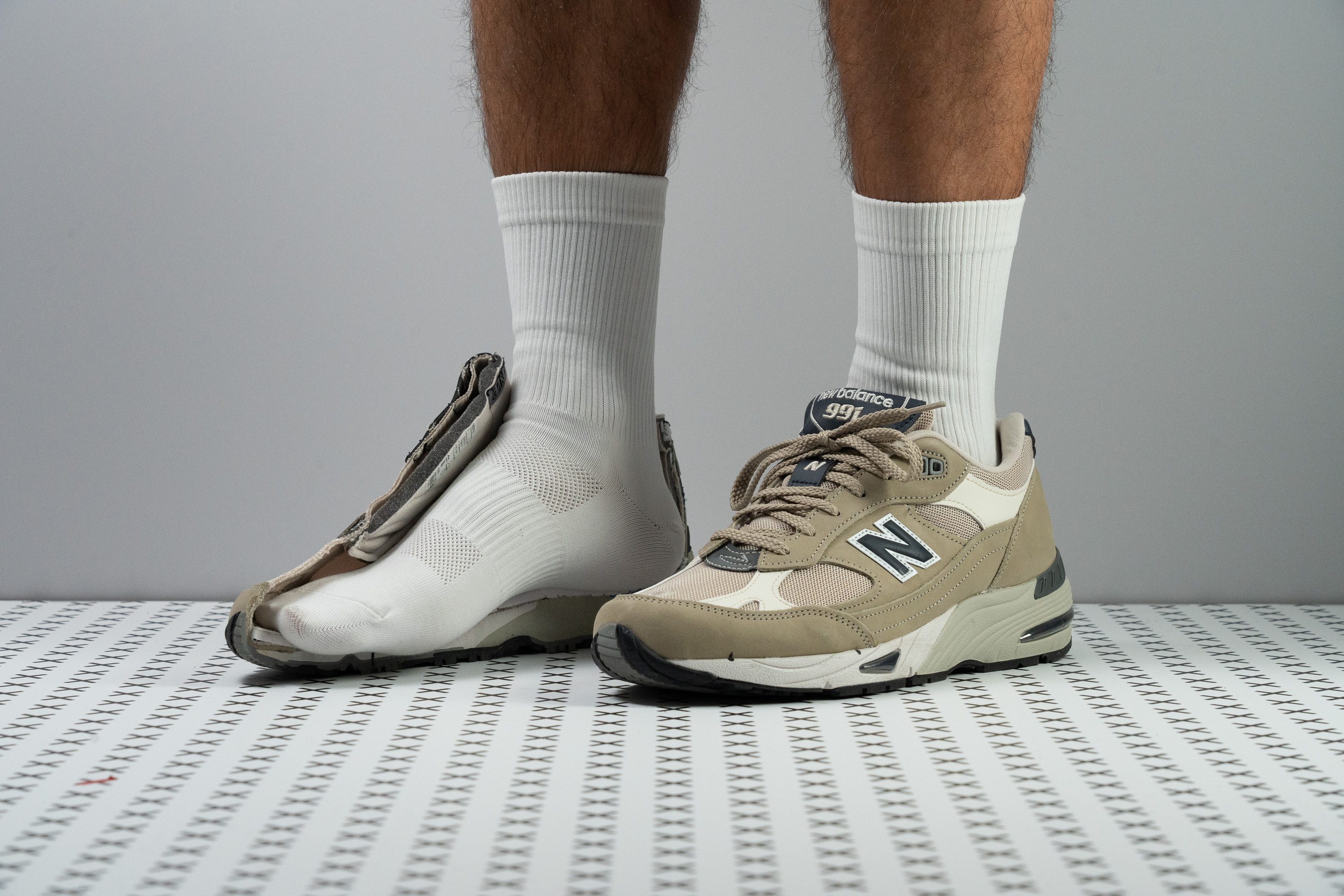Our verdict
Pros
- Very comfortable
- Timeless style
- Good impact protection
- Secure lockdown
- Great heel hold
- Extremely breathable
- Premium construction
- Excellent traction
Cons
- Expensive
- Rather firm midsole
- Quite heavy
Audience verdict
Comparison
The most similar trainers compared
+ + Add a shoe | |||||
|---|---|---|---|---|---|
| Audience score | 89 Good! | 85 Decent! | 86 Decent! | 87 Good! | |
| Price | £200 | £220 | £220 | £210 | |
| Style | ClassicDadSportyChunky | DadRetro | ClassicDadRetroSportyChunky | ClassicSporty | |
| Shock absorption | - | Moderate | Moderate | - | |
| Energy return | - | Moderate | Low | - | |
| Traction | - | Moderate | Moderate | - | |
| Breathability | Breathable | Breathable | Breathable | Breathable | |
| Weight lab | 15.3 oz / 434g | 13.9 oz / 395g | 12.9 oz / 366g | 13.9 oz / 393g | |
| Size | True to size | True to size | True to size | True to size | |
| Midsole softness | Balanced | Firm | Balanced | Balanced | |
| Material | LeatherMesh | MeshSuede | MeshSuede | LeatherMeshSuede | |
| Season | Summer | Summer | Summer | SpringFall | |
| Inspired from | Running | Running | Running | Running | |
| Width / fit | Medium | Medium | Medium | Medium | |
| Toebox width | Medium | Medium | Medium | Medium | |
| Leather/suede quality | Real leather | Real leather | Real suede | - | |
| Toebox durability | Bad | Decent | Bad | Decent | |
| Heel padding durability | Good | Decent | Decent | Bad | |
| Outsole durability | Good | Decent | Good | Good | |
| Heel stack lab | 34.6 mm | 35.2 mm | 39.1 mm | 34.1 mm | |
| Stiffness | Stiff | Flexible | Moderate | Moderate | |
| Tongue padding | Average | Average | Average | Average | |
| Drop lab | 14.6 mm | 15.6 mm | 15.3 mm | 14.5 mm | |
| Forefoot | 20.0 mm | 19.6 mm | 23.8 mm | 19.6 mm | |
| Removable insole | ✓ | ✓ | ✓ | ✓ | |
| Heel tab | None | None | None | None | |
| Torsional rigidity | Stiff | Moderate | Stiff | Moderate | |
| Heel counter stiffness | Stiff | Flexible | Stiff | Moderate | |
| Reflective elements | ✓ | ✓ | ✓ | ✓ | |
| Closure | Laces | Laces | Laces | Laces | |
| Top | Low top | Low top | Low top | Low top | |
| Ranking | #81 Bottom 35% | #114 Bottom 5% | #110 Bottom 9% | #106 Bottom 12% | |
| Popularity | #116 Bottom 7% | #96 Bottom 20% | #68 Bottom 43% | #67 Bottom 44% |
Who should buy
We recommend the New Balance 991 v1 as an excellent option for:
- Sneakerheads looking for a super comfy kick with a "dad-shoe" vibe to add to their collection.
- Those in warmer climates who need a breathable sneaker to keep their feet fresh
- Active users who prioritise good traction to confidently tackle certain fitness activities
- Retro geeks looking for a classic kick that's been revamped while maintaining its iconic silhouette
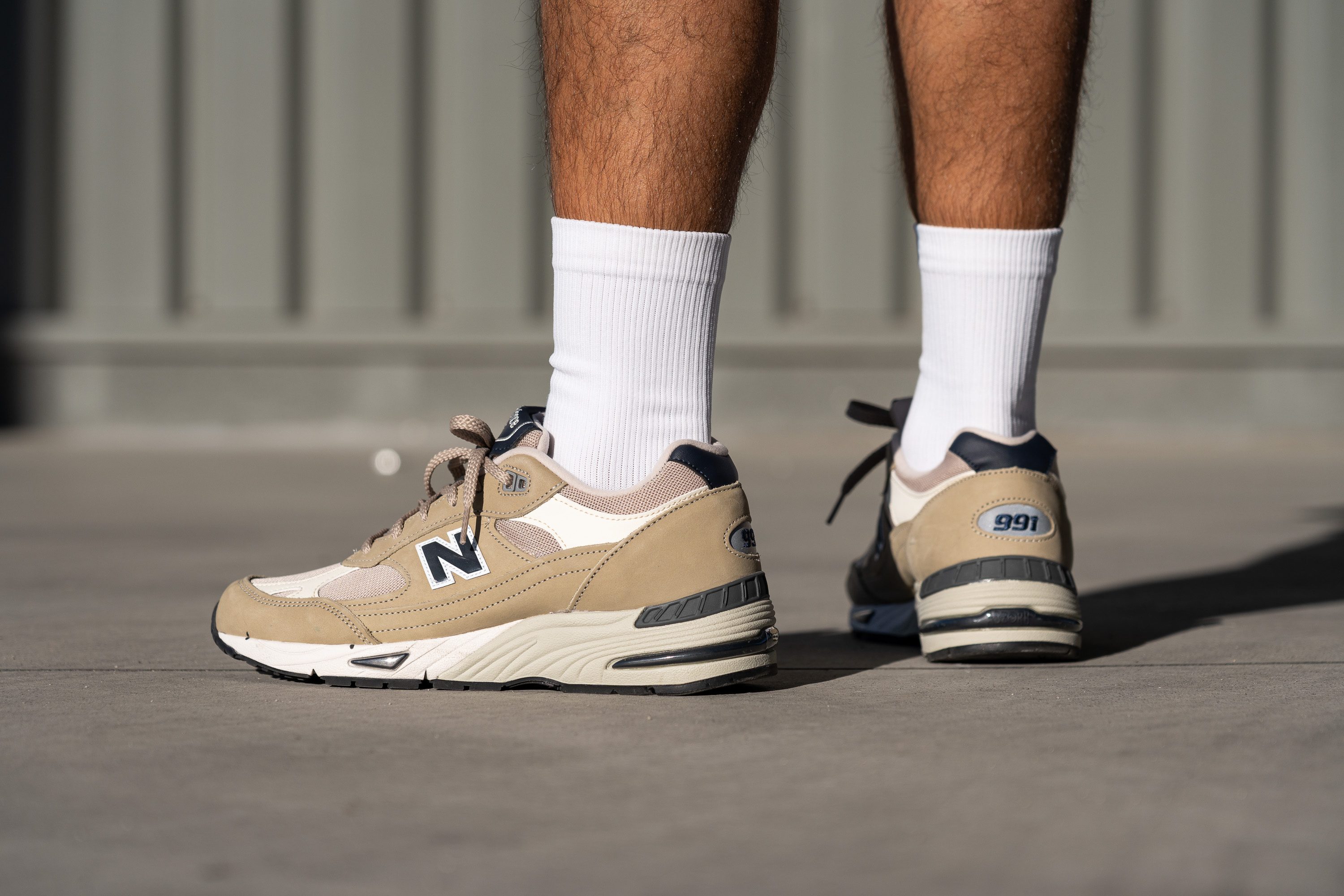
Who should NOT buy
At over 15 oz, the 991 v1 is undeniably hefty. We recommend looking into the New Balance 530 or the New Balance 327 as lighter alternatives that hover around the 10 - 11 oz mark.
The 991 v1 boasts an incredibly plush interior, though the same can't be said of its ABZORB midsole foam which feels quite firm underfoot. For those who prefer a comfy shoe with a softer ride, we recommend the cushy New Balance 9060 instead.
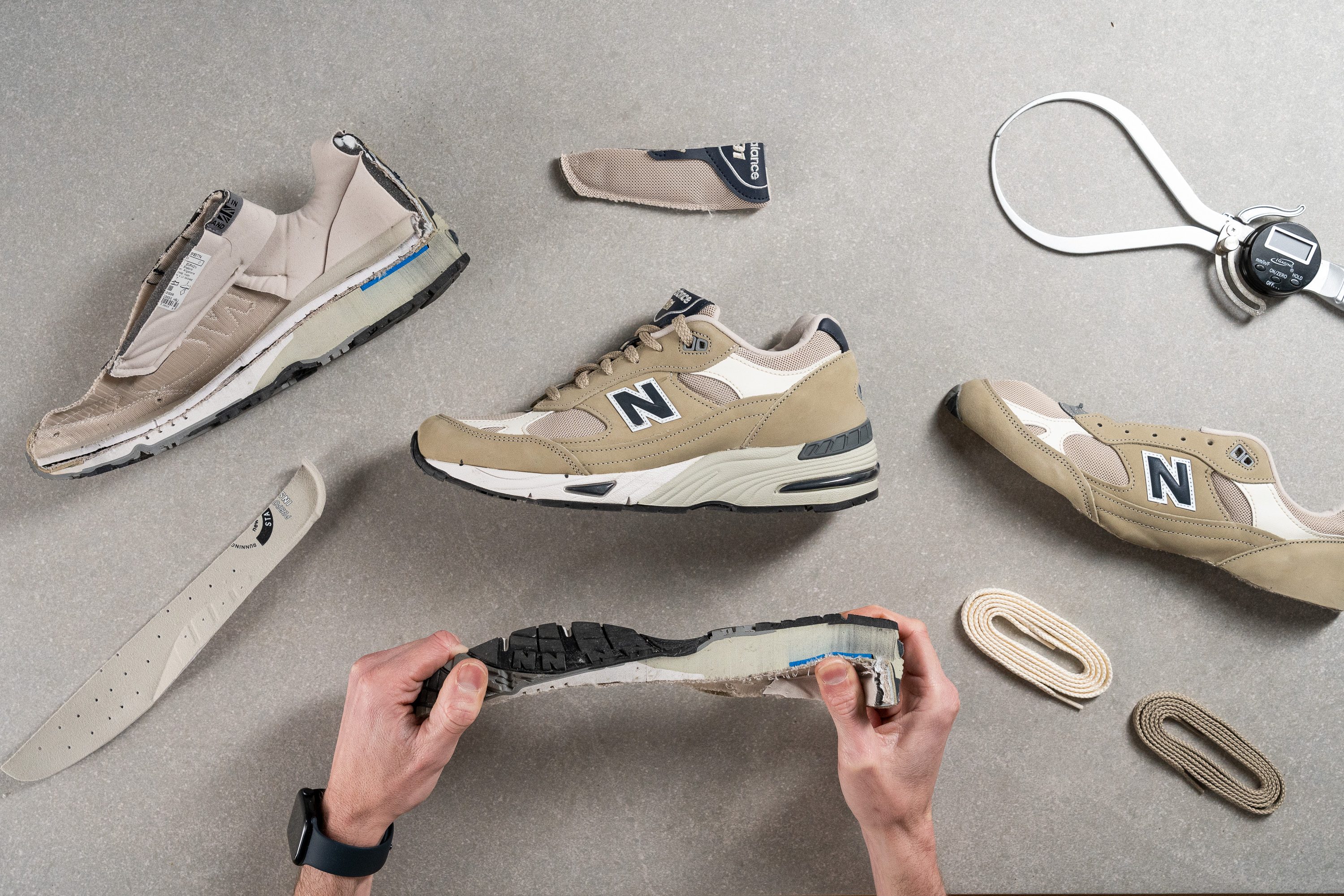
With a price tag of £220, the 991 v1 is a wallet-buster of a sneaker. For more budget-friendly alternatives, we recommend checking out the New Balance 574 or the New Balance 550.
Cushioning
Heel stack
The 991 v1 is a well-cushioned shoe that boasts a heel stack of 34.6 mm according to our caliper measurements. This is a little thicker than our current lab average and gives us plenty of midsole foam underfoot to dampen the impact of our landings while walking in this shoe.
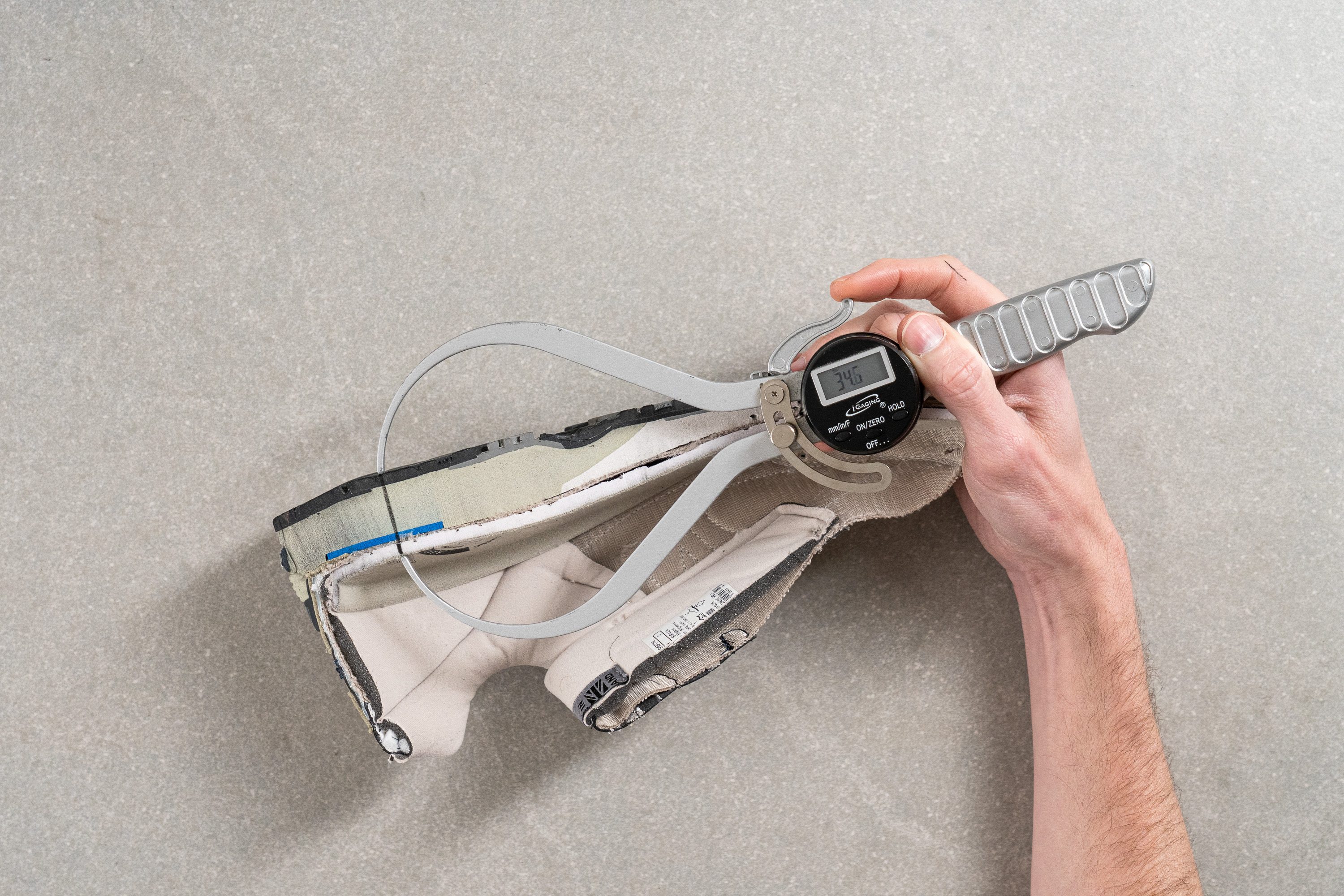
| 991 v1 | 34.6 mm |
| Average | 30.7 mm |
Forefoot stack
The shoe's forefoot stack falls more in line with our current lab average at 20 mm thick. This is a good amount of protective foam to have at the forefoot while still allowing for some sense of the ground below.

| 991 v1 | 20.0 mm |
| Average | 19.5 mm |
Drop
The difference in our stack measurements leaves us with a rather steep offset of 14.6 mm. This mix of an elevated heel with a grounded forefoot is quite common as it promotes smooth transitions from heel to toe, so should feel quite natural for most.

For those who prefer a shoe with a less pronounced drop, we recommend the New Balance 237 instead. Alternatively, for those curious about a truly parallel-to-the-ground experience, we suggest looking into zero-drop specialists; Altra.
| 991 v1 | 14.6 mm |
| Average | 11.2 mm |
Midsole softness
Pressing our durometer against the 991 v1's ABZORB midsole yields a rather firm reading of 27.4 HA. So while the shoe's interior feels incredibly plush and cloudlike, the same can't be said of the shoe's cushioning.

However, it does do a good job of protecting our feet from impact and feels comfortable enough for normal day-to-day use.
What's more, by not compressing very much under our weight, the 991 v1 doesn't have the wobbliness of shoes with a more plush midsole underfoot which adds to its stable ride.
| 991 v1 | 27.4 HA |
| Average | 28.6 HA |
Size and fit
Size
New Balance 991 v1 fits true to size (28 votes).
Width / Fit
Using our caliper, we found the 991 v1's toebox to fall in line with our current lab average at 99.3 mm wide at its widest point. This should be roomy enough for most people to enjoy a comfy fit apart from those with very broad feet.
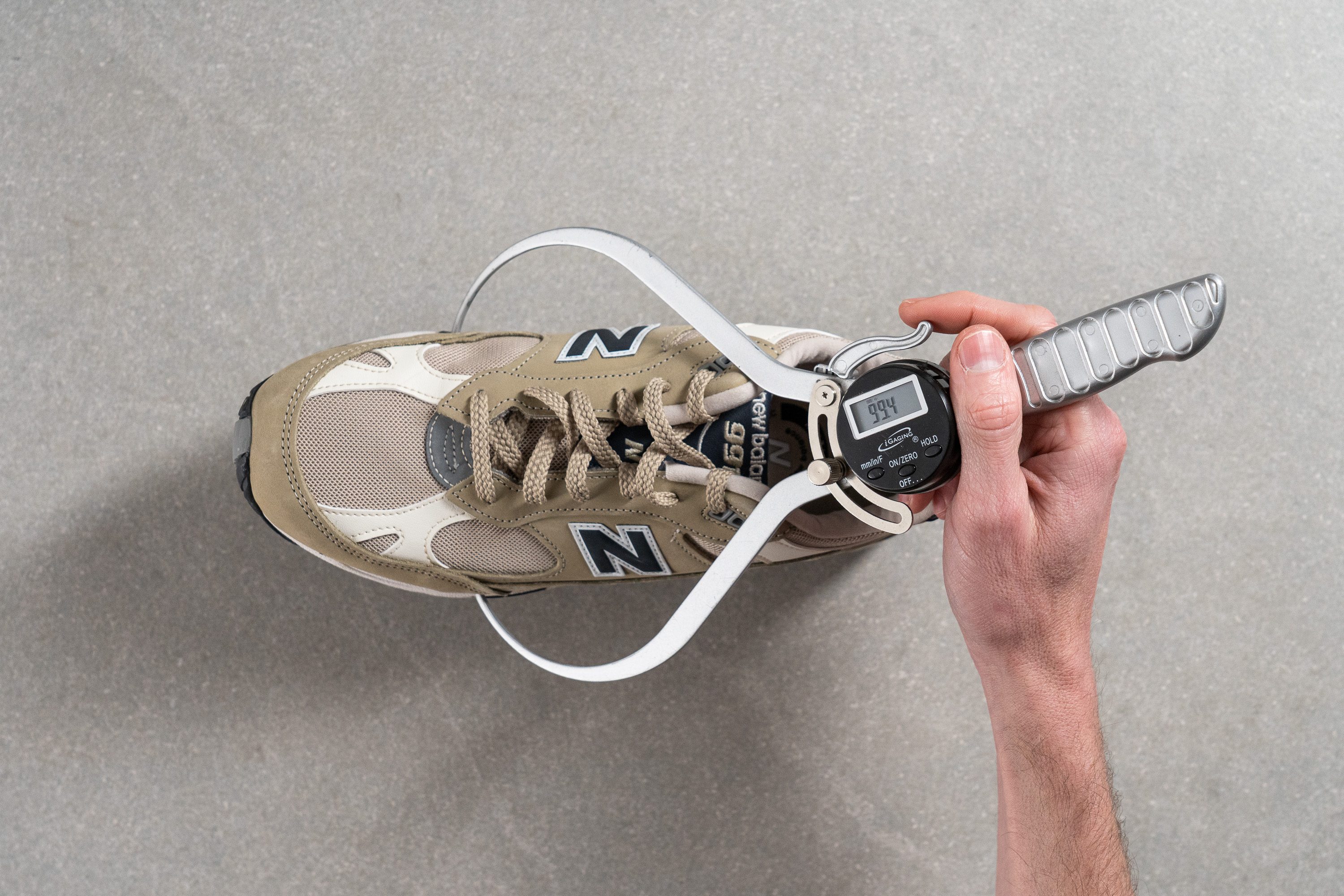
This test follows an older methodology, which is why you don't see recently tested shoes in the chart. Results from different methodologies can not be compared.
| 991 v1 | 99.1 mm |
| Average | 99.0 mm |
Toebox width
Moving to the area around the big toe, the 991 v1's toebox is very slightly narrower than average at 74.2 mm wide.
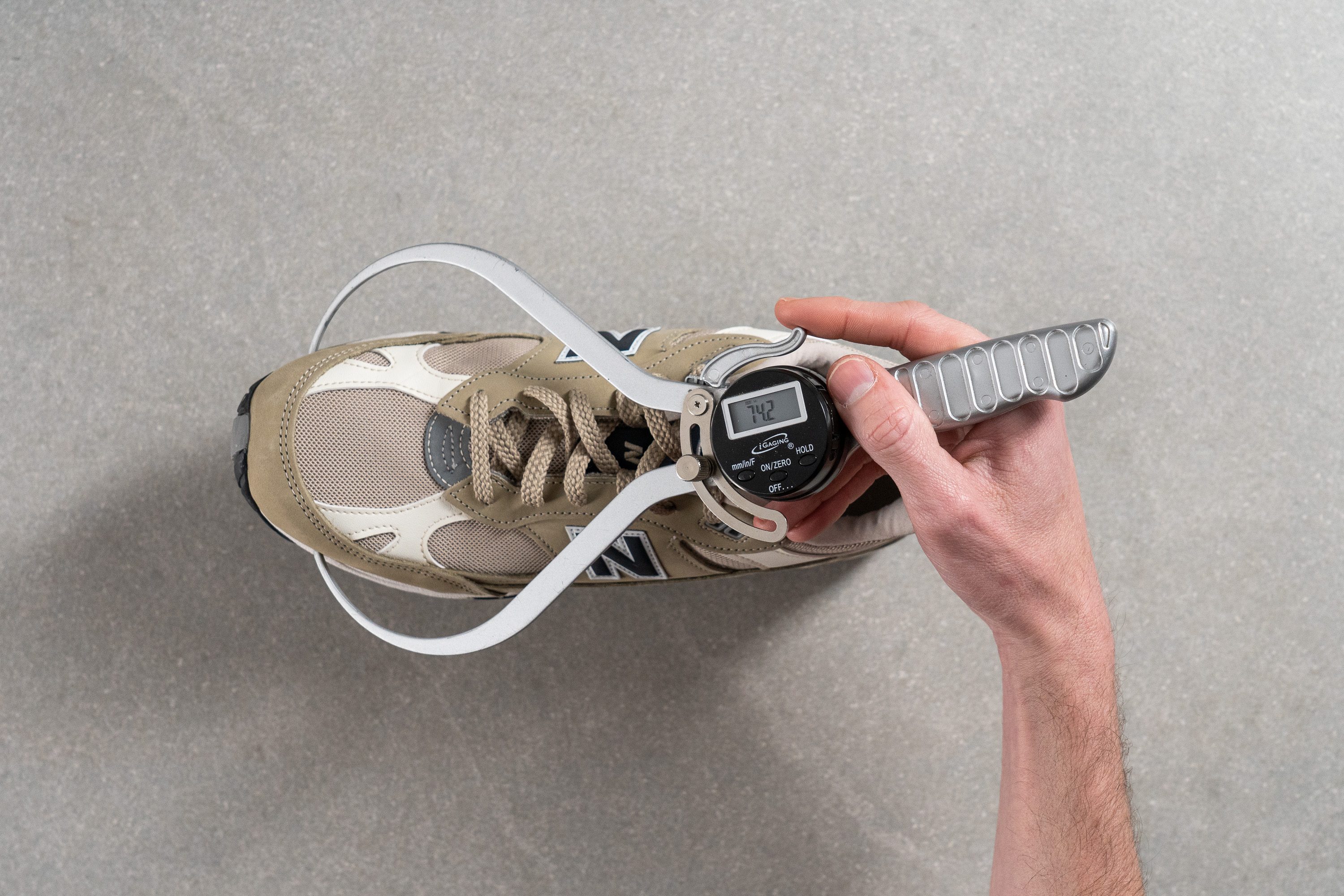
While this won't pose an issue for most people, those with wide feet of a certain shape might want to consider sizing up or going for a shoe that doesn't taper as drastically like the NB 57/40.
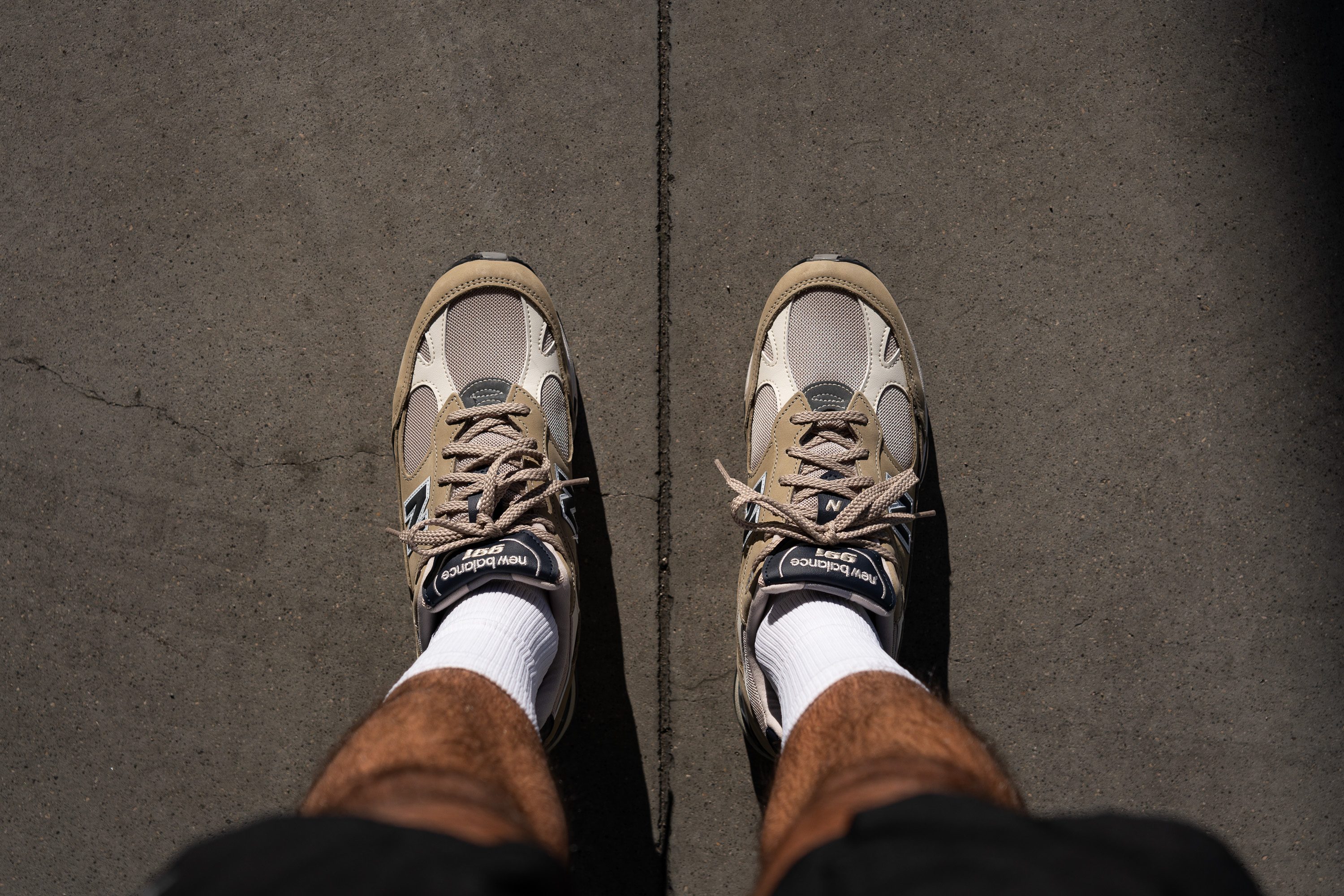
This test follows an older methodology, which is why you don't see recently tested shoes in the chart. Results from different methodologies can not be compared.
| 991 v1 | 74.2 mm |
| Average | 75.0 mm |
Flexibility / Stiffness
Thanks to the dense ABZORB midsole, the 991 v1 is quite a bit stiffer than the average sneaker, requiring 30.6N of force to it 90 degrees in our flex test.
As such, the shoe resists the bending of our foot during our stride. While this translates to a less natural feeling underfoot, it does add to the shoe's stable ride. Furthermore, this stiffness is beneficial for those with foot conditions, like plantar fasciitis, as it prevents excessive foot flexion.
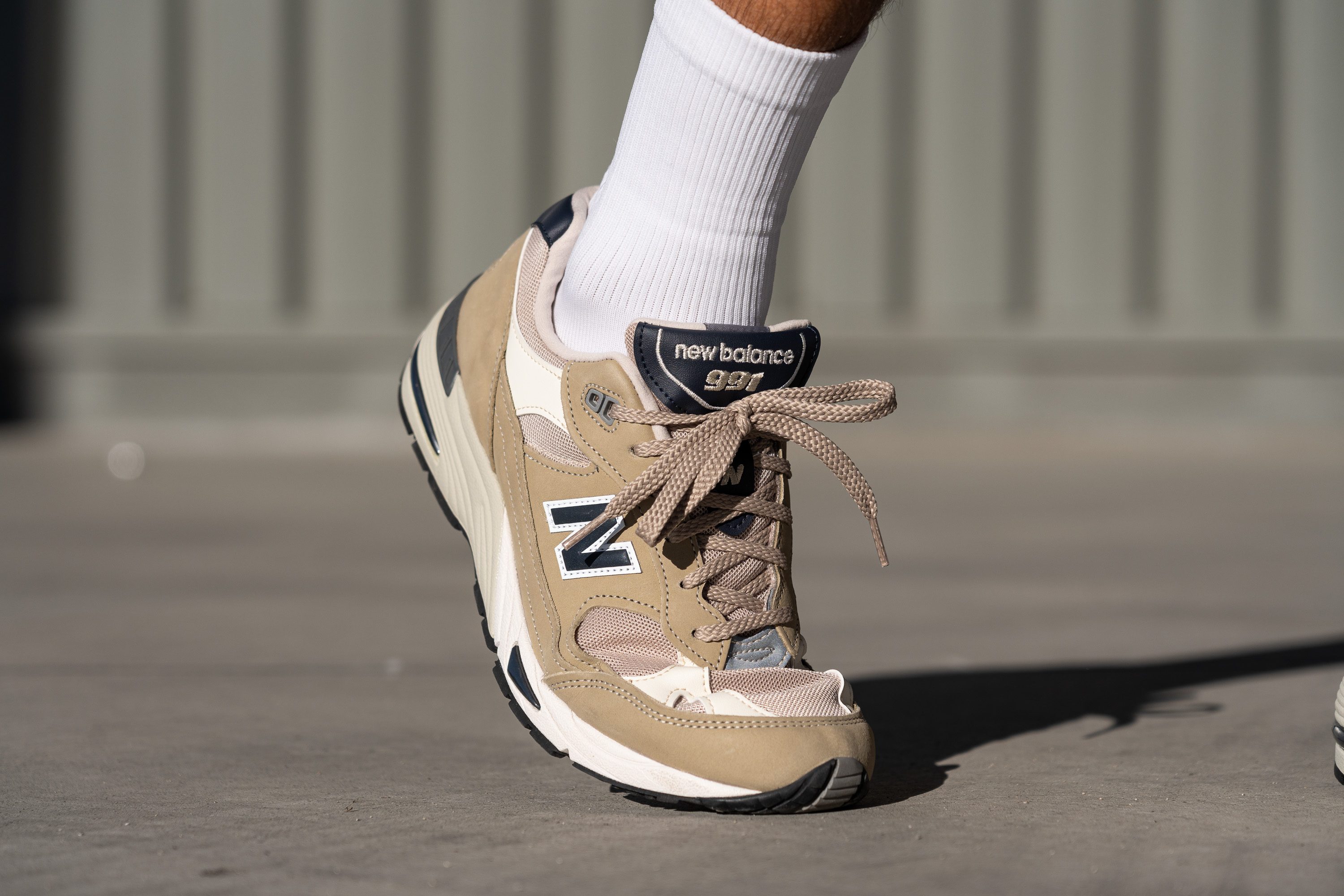
This test follows an older methodology, which is why you don't see recently tested shoes in the chart. Results from different methodologies can not be compared.
| 991 v1 | 30.6N |
| Average | 23.3N |
Weight
Tipping our scale at 15.3 oz (434g), the 991 v1 is quite heavy compared to the average sneaker. While they didn't feel overly burdensome as we tested them over the course of a normal day, the combined weight of almost 2 lbs underfoot makes this chunky kick a less-than-ideal choice for those who spend long hours on their feet.
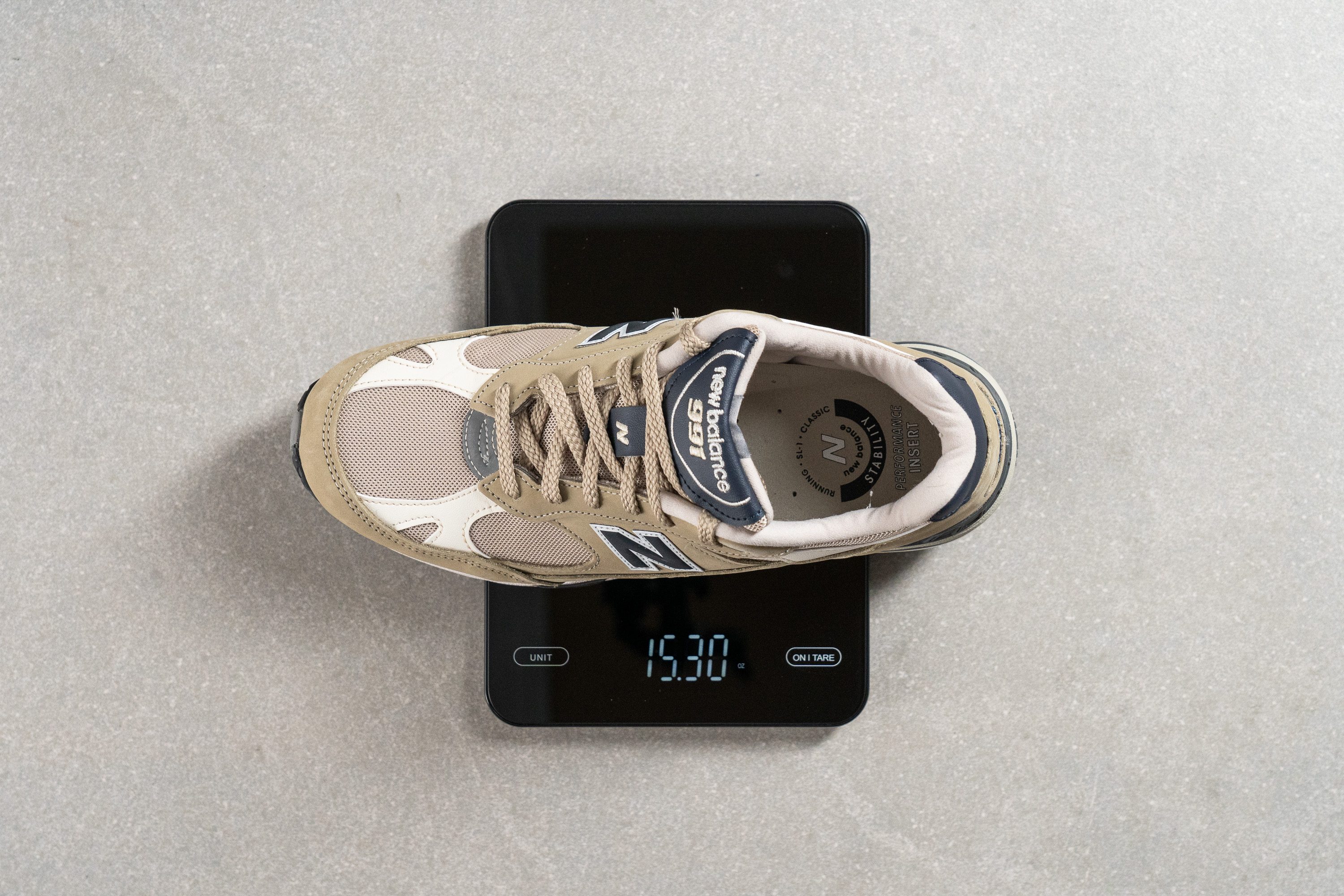
For those in the market for a more lightweight alternative that still boasts that "dad-shoe" look, we recommend checking out the New Balance 530 instead which weighs in at only 10.9 oz (308g).
| 991 v1 | 15.3 oz (434g) |
| Average | 13.8 oz (390g) |
Breathability
As demonstrated by our smoke test, the 991 v1 is an extremely well-ventilated shoe that earns a perfect 5 out of 5 for breathability. This not only means that our feet feel nice and breezy on warm muggy days, but that the shoe doesn't trap in sweat so it shouldn't develop that dreaded musty odour over time.
For a shoe with so many leather overlays, the 991 v1's stellar performance in our previous test comes as a bit of a surprise. However, shining a light through a cross-section of the upper reveals the mesh at the toebox to be extremely dainty and almost translucent, giving us a good idea of where most of the heat escapes.
This is further confirmed by our microscope image of the toebox mesh which reveals a multi-layered network of braids with lots of large perforations that promote excellent airflow; creating a virtual chimney in this part of the shoe.
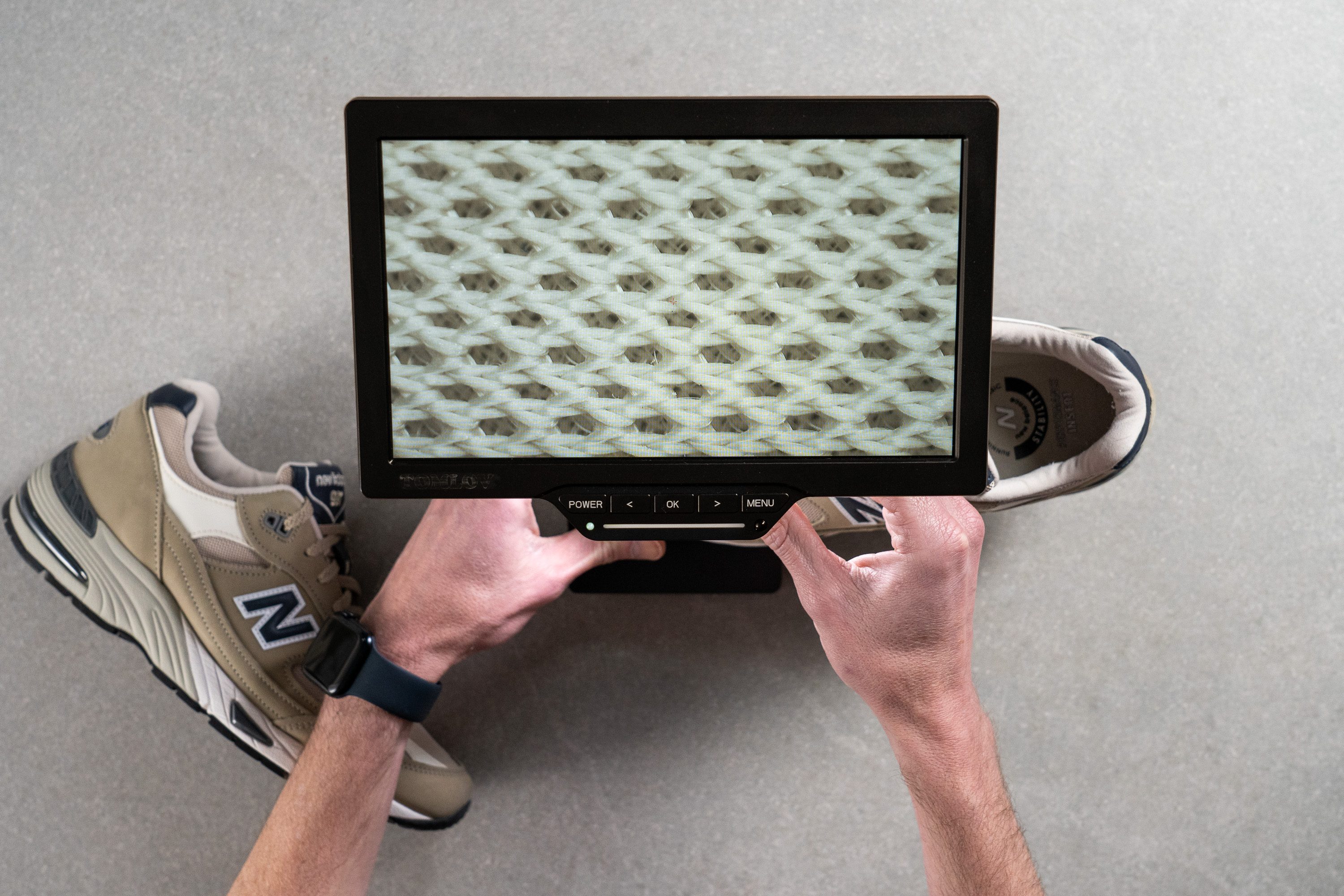
| 991 v1 | 5 |
| Average | 3 |
Stability
Lateral stability test
With its firm midsole foam and low profile at the forefoot, the 991 v1 feels quite well planted and stable as we shift our weight from side to side in the shoe. This is also thanks to the well-structured upper that provides a secure foothold that kept us feeling nice and locked in within the shoe.
Torsional rigidity
We found it very difficult to bend and twist the 991 v1 in our hands, leading us to give it a maximum torsional rigidity score of 5 out of 5 on our subjective scale. This is, no doubt, a result of the dense midsole and the stiff upper and means that the shoe resists any natural contortions of our foot during our stride. In this way, the 991 v1 maintains a very level base that promotes surefooted and stable landings while we test the shoe.
| 991 v1 | 5 |
| Average | 3.6 |
Heel counter stiffness
The 991 v1's heel counter is quite well-structured and rigid, earning a stiffness score of 4 out of 5 in our manual assessment. As such, we found that the shoe does a good job of keeping our rearfoot locked in place without putting too much pressure on our tendons while still allowing for some natural lateral movements. A good mix of comfort and stability.
| 991 v1 | 4 |
| Average | 3.2 |
Midsole width - forefoot
At 107.9 mm wide at the forefoot according to our caliper measurements, the 991 v1's midsole is slightly narrower than our current lab average. This is more than enough of a base underfoot that we didn't face any stability issues while testing this sneaker.

| 991 v1 | 107.9 mm |
| Average | 108.9 mm |
Midsole width - heel
Back at the heel, the 991 v1's midsole falls more in line with our current lab average at 83.1 mm wide.

| 991 v1 | 83.1 mm |
| Average | 84.0 mm |
Durability
Leather/Suede quality
To test whether all the 991 v1's overlays are made of genuine leather, we torched the various elements and scratched at the burnt remains with our awl starting with the main portion of alleged pigskin leather.
As we can see, the material gets singed and those burnt portions come flaking off the shoe as we agitate it with our tool. This tells us that the leather is, in fact, real pigskin. The same can't be said for the coloured piece at the heel which caught fire and melted after making contact with the flame. Clearly synthetic.
The white overlay on the side suffered a similar fate and essentially conflagurated out of existence.
| 991 v1 | Real leather |
Toebox durability
Fine mesh toeboxes don't tend to fare too well against our callous Dremel and the 991 v1's is no exception. Spinning at 5K RPM, our tool's abrasive element made quick work of the unreinforced mesh and shredded clean through it by the end of the four-second test.
This earns the toebox a durability score of 1 out of 5, though the shoe does have a leather overlay that should protect it from most bumps and scrapes. We still don't recommend traipsing through bushy areas as one unlucky snag can easily put the 991 v1 out of commission.
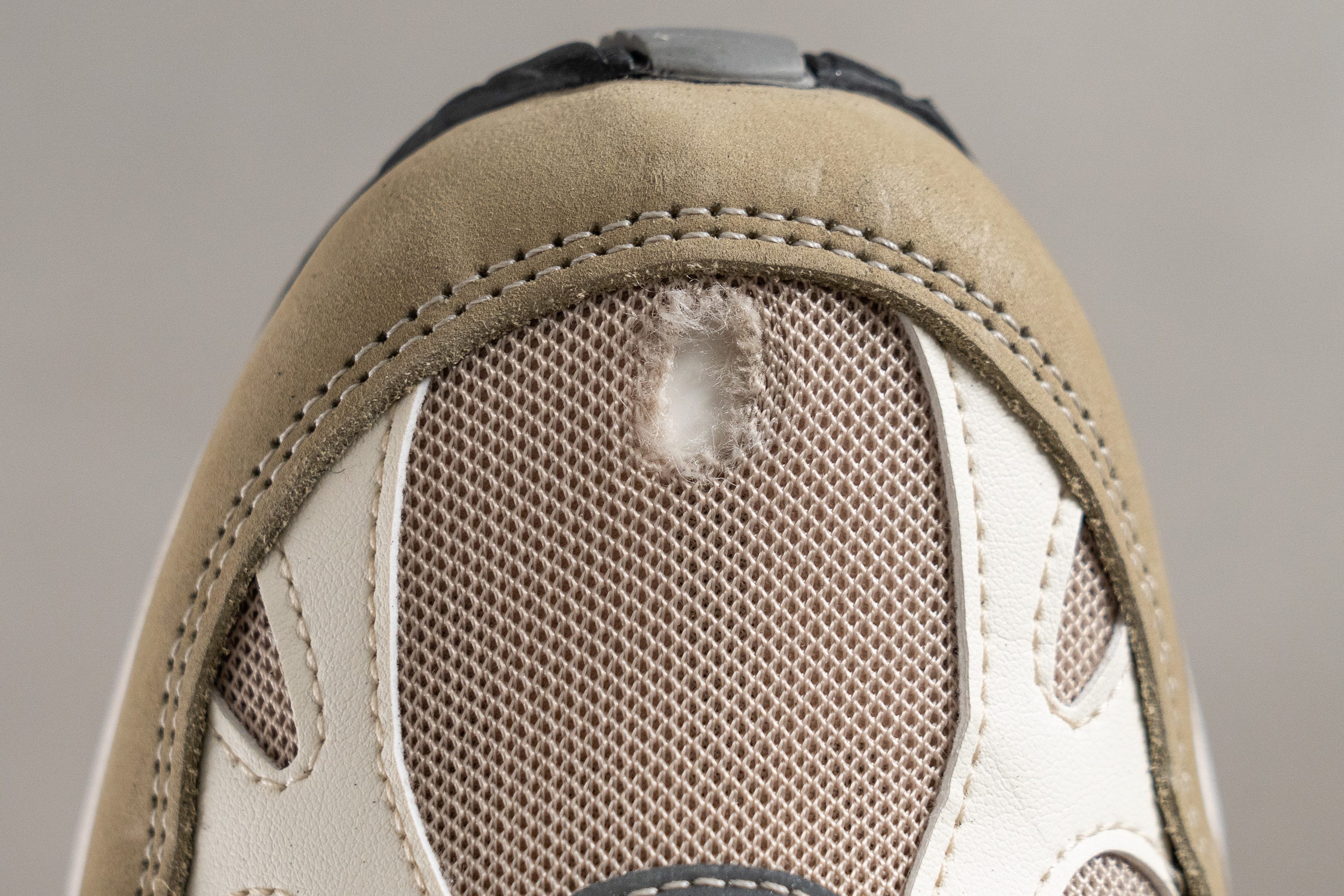
| 991 v1 | 1 |
| Average | 3.7 |
Heel padding durability
Next, we set our Dremel against the 991 v1's well-padded heel counter for another four seconds of grinding and were very impressed with the result.
Our tool barely left a scuff on the lining material which remained almost perfectly intact after the test. This incredible performance leads us to give the 991 v1 a heel padding durability score of 5 out of 5 which means that the plush padding back there will be well-protected and uncompromised throughout this shoe's lifetime.
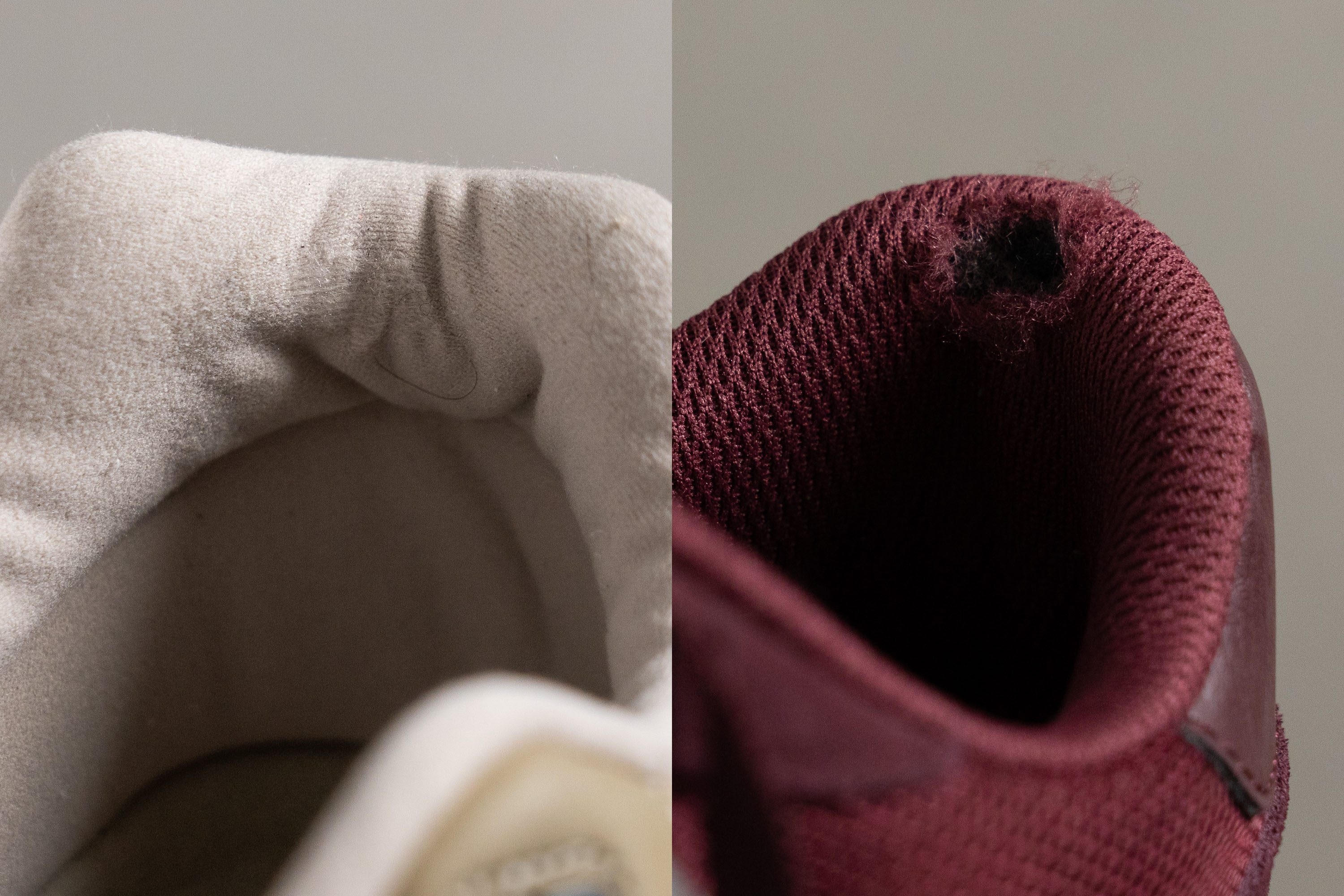
The NB 237, on the other hand, clearly isn't as sturdy back there with the Dremel eating away at a lot of the soft padding within in this same test.
| 991 v1 | 5 |
| Average | 3.2 |
Outsole hardness
Pressing our durometer against the outsole yields an average reading of 86 HC. We've found that this level of hardness usually indicates a good mix of grip and durability.
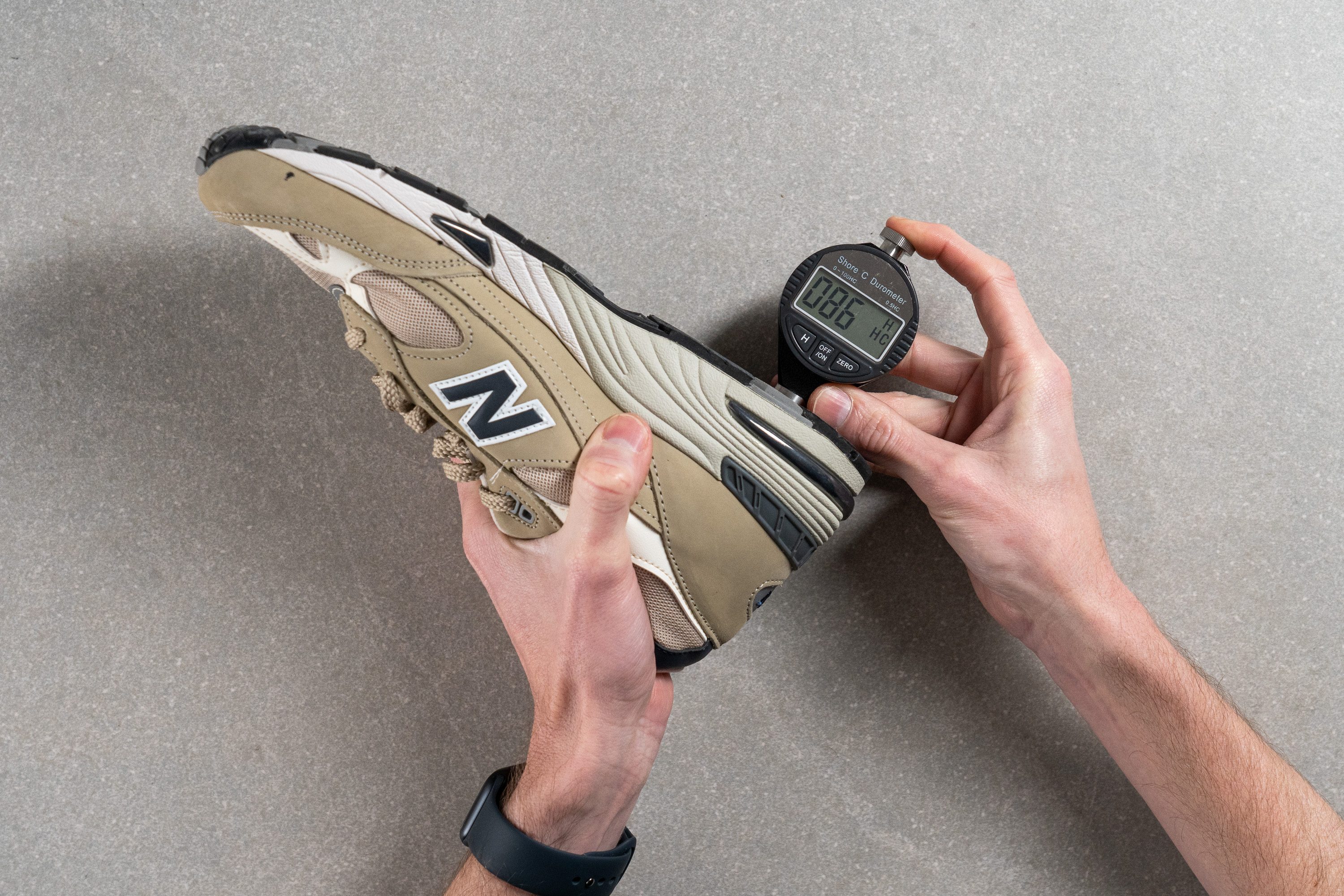
| 991 v1 | 86.0 HC |
| Average | 85.7 HC |
Outsole durability
We set the Dremel, now spinning at 10K RPM, against the outsole rubber for its final face-off with the 991 v1.
After twenty-two seconds, we used a tyre tread gauge to measure the indentation left behind and found that 0.9 mm of rubber had been worn away from the outsole. This performance puts the 991 v1 on par with the average sneaker which loses a similar amount of material. As such, we predict that this should last the expected 400 to 500 miles of use before major signs of wear appear on the outsole.
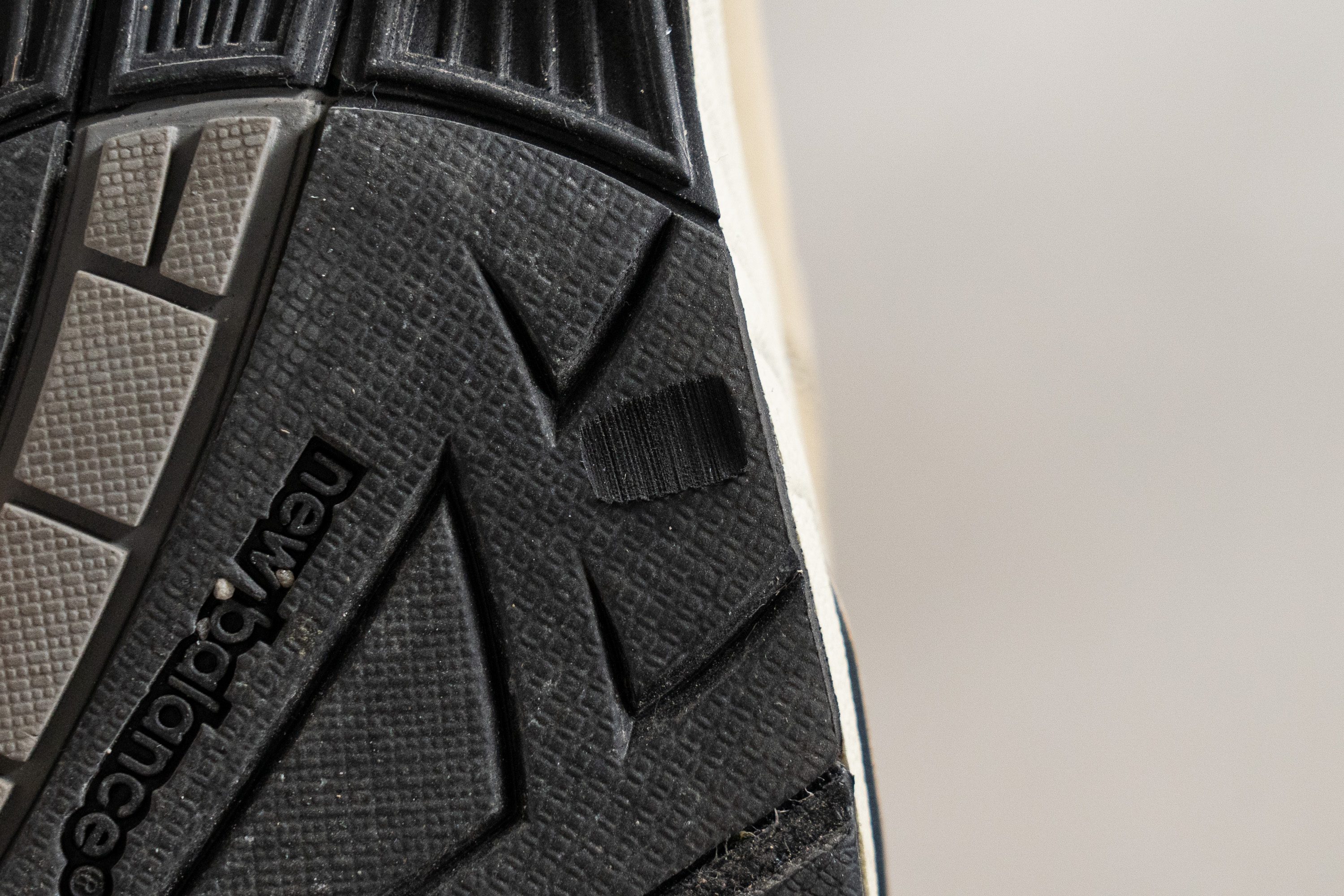
| 991 v1 | 0.9 mm |
| Average | 1.1 mm |
Outsole thickness
We measured the outsole with our caliper and found it to be 5.8 mm thick which is also right around the current lab average.

| 991 v1 | 5.8 mm |
| Average | 5.3 mm |
Misc
Insole thickness
At 5.1 mm thick based on our caliper measurements, the insole is as thick as average and provides us with a nice and cushy footbed within the shoe as well as good arch support.
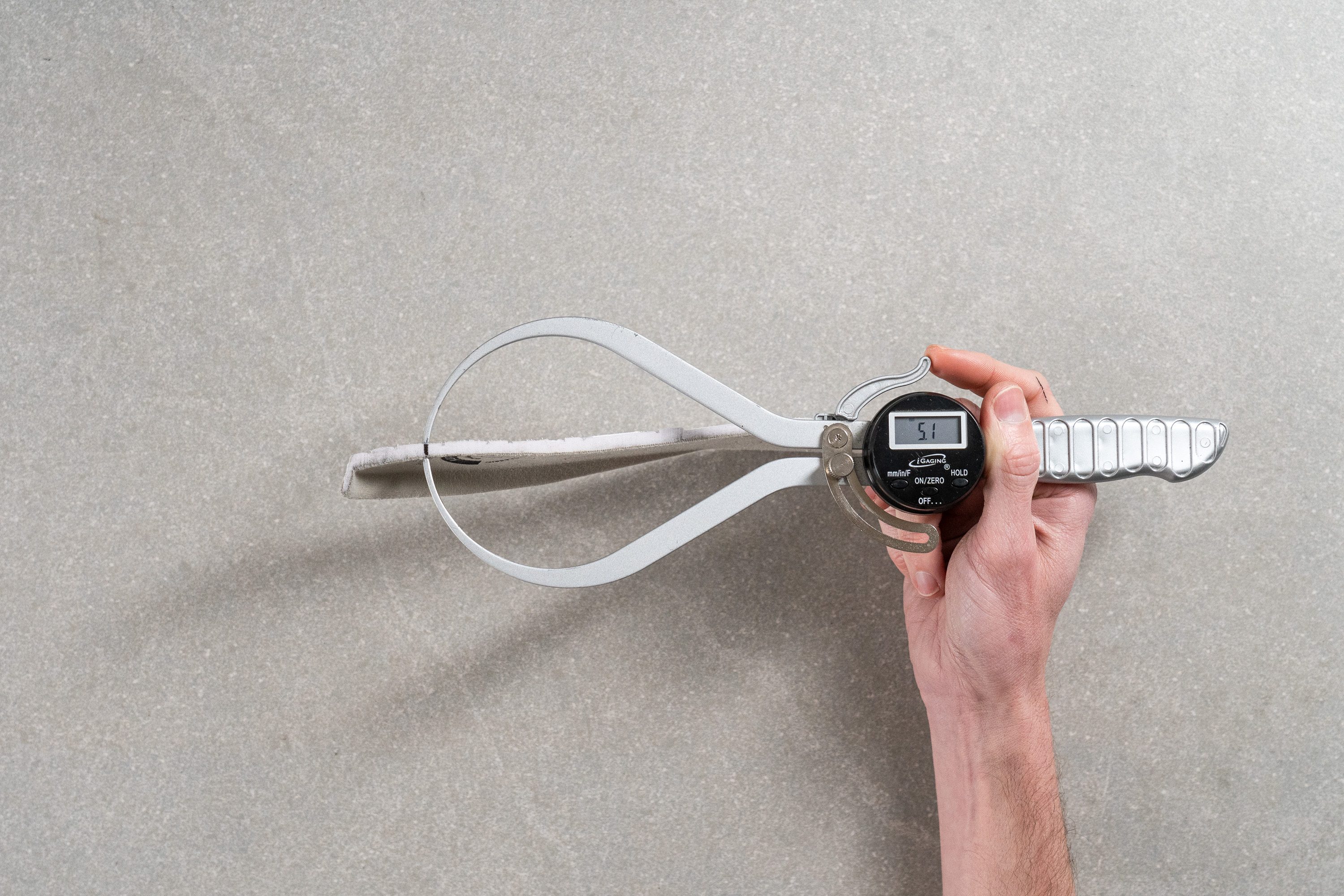
| 991 v1 | 5.1 mm |
| Average | 5.1 mm |
Removable insole
The insole isn't glued in so removing and replacing it with an aftermarket alternative or a custom orthotic is possible if needed.

| 991 v1 | Yes |
Reflective elements
With one little reflective element at the base of the laces, "better to have it and not need it than to need it and not have it", seems to have been the ethos behind the decision to include this seemingly ineffective feature.
| 991 v1 | Yes |
Tongue padding
Using our calliper, we measured the 991 v1's tongue at a beefy 10.7 mm thick. This is more padded than our current lab average and means that we enjoyed a soft and pillowy lockdown across the instep while testing with absolutely no hint of lace bite.

The luxurious padding isn't reserved for the shoe's tongue. The 991 v1 is generously padded throughout, with a nice and chunky heel to boot that further contributes to the shoe's gentle yet secure lockdown.
| 991 v1 | 10.7 mm |
| Average | 9.6 mm |
Tongue: gusset type
The 991 v1's tongue isn't gusseted. Despite this, however, the chunkiness of the tongue and its central lace loop help to mitigate any side-to-side slippage as we test the shoe.
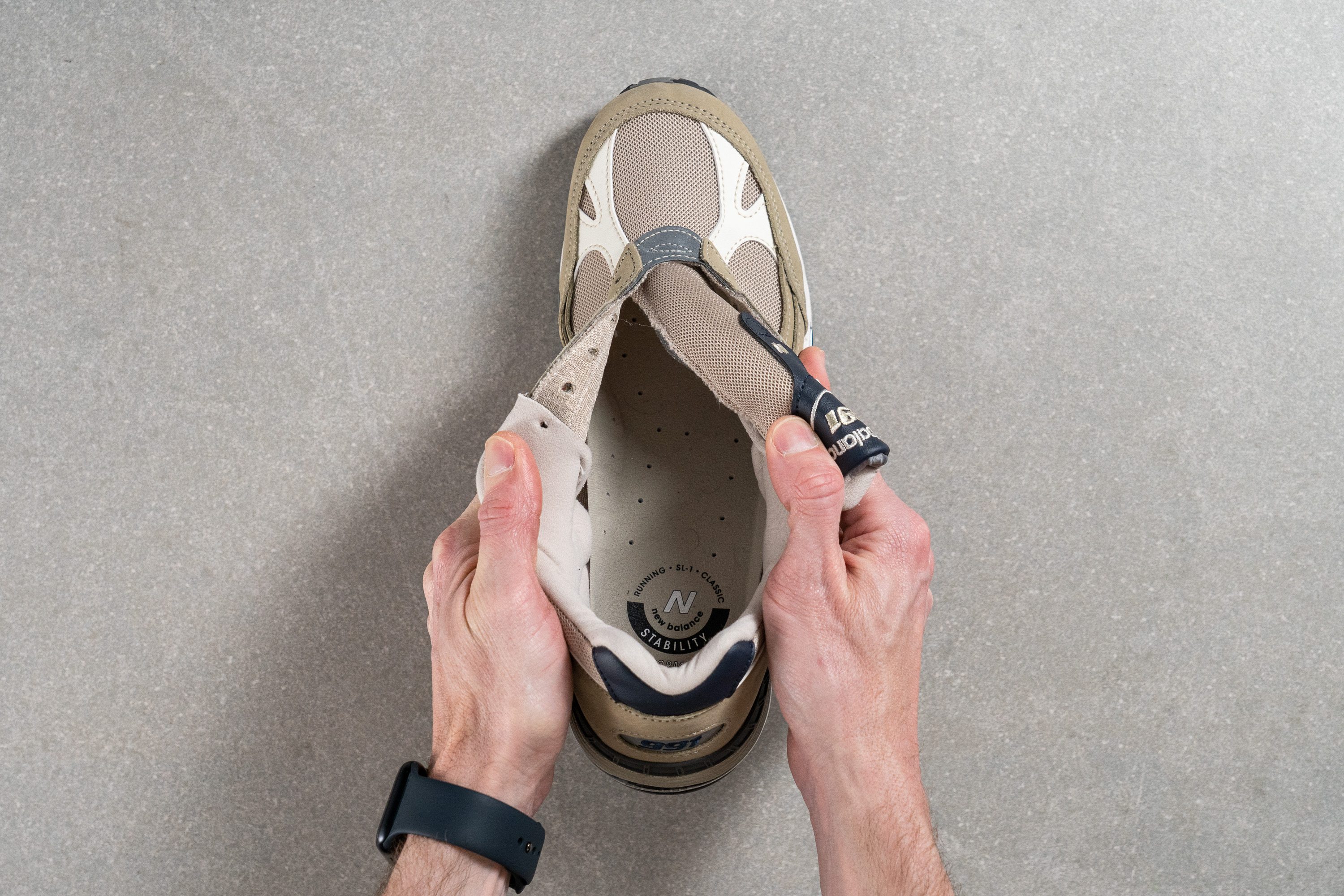
| 991 v1 | None |

